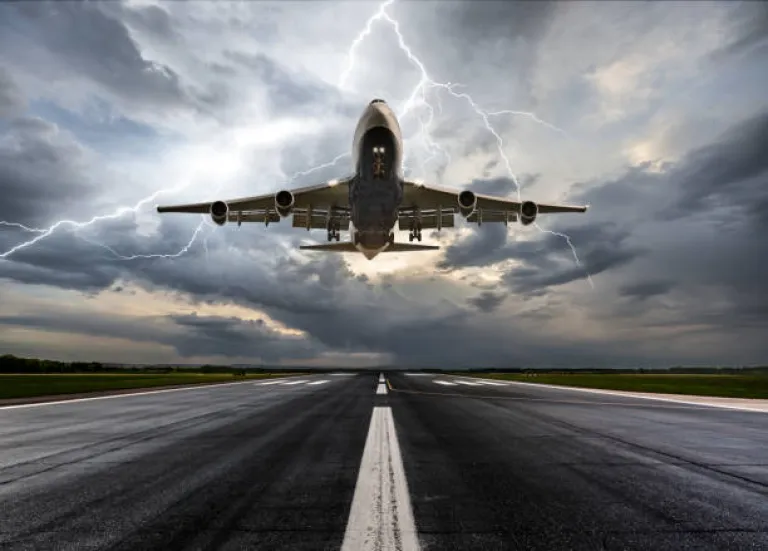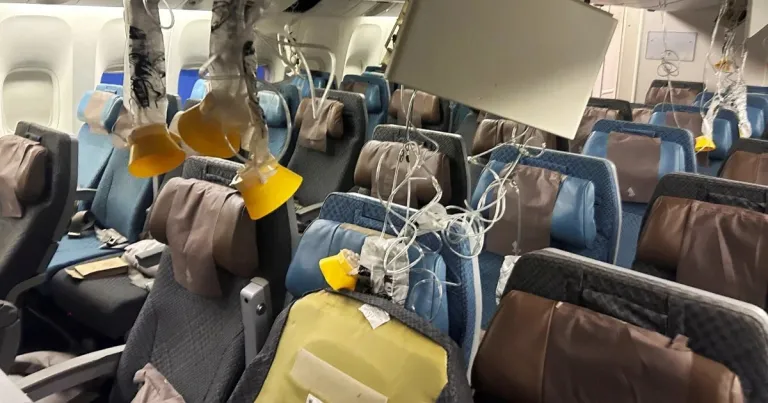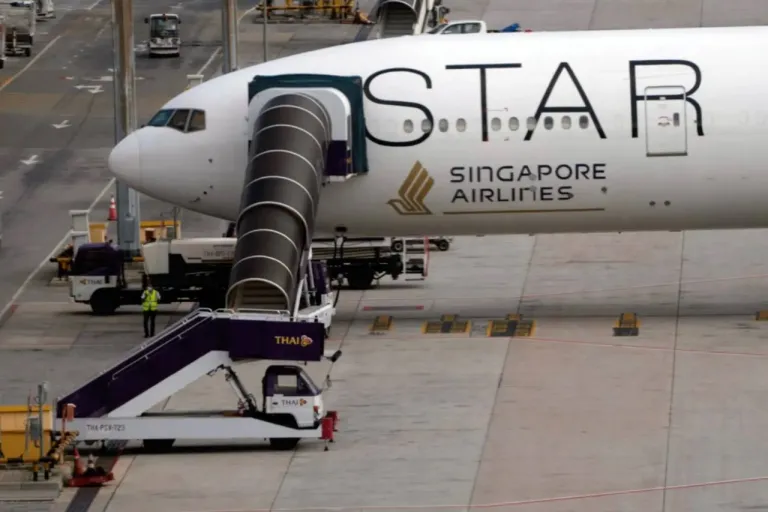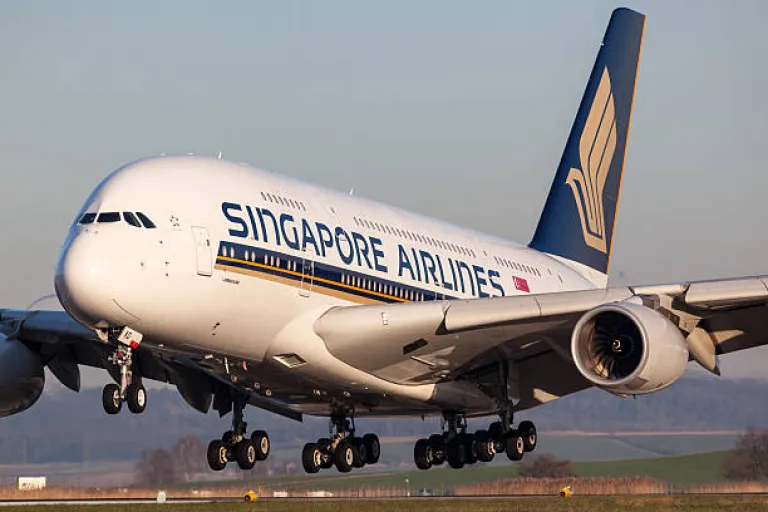Singapore Airlines Turbulence Tragedy Insights: Key Takeaways
 The recent severe turbulence experienced by Singapore Airlines flight SQ321 from London to Singapore serves as a stark reminder of the unpredictable nature of air travel and the critical importance of safety protocols.
The recent severe turbulence experienced by Singapore Airlines flight SQ321 from London to Singapore serves as a stark reminder of the unpredictable nature of air travel and the critical importance of safety protocols.
This Boeing 777-300ER encountered extreme turbulence over Myanmar, resulting in a 400-foot ascent and descent, tragically leading to one passenger's death and injuries to at least 30 others.
Understanding the Incident

The Flight Path and Conditions
 Approximately ten hours into the flight, the aircraft was cruising at an altitude of 37,000 feet over the Irrawaddy Basin in Myanmar, an area known for its severe weather conditions.
Approximately ten hours into the flight, the aircraft was cruising at an altitude of 37,000 feet over the Irrawaddy Basin in Myanmar, an area known for its severe weather conditions.
The flight was proceeding smoothly until it encountered clear-air turbulence (CAT), a type of turbulence that is invisible and cannot be detected by onboard weather radar.
The Nature of Clear-Air Turbulence
 Clear-air turbulence occurs in clear skies without any visible indicators such as clouds. It is typically caused by atmospheric pressure waves and jet streams.
Clear-air turbulence occurs in clear skies without any visible indicators such as clouds. It is typically caused by atmospheric pressure waves and jet streams.
The turbulence experienced by flight SQ321 was so severe that it caused the aircraft to drop 6,000 feet within a few minutes, resulting in a violent and chaotic experience for those on board.
Also read: 12 Most Scenic Flight Routes Around The World
Immediate Effects on the Cabin
 The sudden turbulence caught passengers and crew off guard. Andrew Davies, a passenger from London, recounted how the seatbelt sign had just turned on before the plane started its rapid descent.
The sudden turbulence caught passengers and crew off guard. Andrew Davies, a passenger from London, recounted how the seatbelt sign had just turned on before the plane started its rapid descent.
The cabin was thrown into disarray with items, including pillows, plates, and cups, being flung into the air.
Passengers who were not wearing their seatbelts were tossed around, leading to injuries. Oxygen masks deployed as the plane dropped rapidly, adding to the panic.
Also read: What to Expect When Travelling to London: Expectations vs Reality
Crew Response
 Despite being injured themselves, the flight crew acted swiftly to assist passengers. They followed emergency protocols, provided first aid, and tried to maintain order in the chaotic cabin.
Despite being injured themselves, the flight crew acted swiftly to assist passengers. They followed emergency protocols, provided first aid, and tried to maintain order in the chaotic cabin.
Unfortunately, Geoff Kitchen, a 73-year-old passenger, suffered a cardiac arrest during the turbulence. Crew members performed CPR for 20 minutes but were unable to revive him.
Emergency Landing
 Given the severity of the situation, the pilots decided to divert the flight to Bangkok for an emergency landing.
Given the severity of the situation, the pilots decided to divert the flight to Bangkok for an emergency landing.
This decision was made to ensure that injured passengers received immediate medical attention. The plane landed safely in Bangkok, where medical personnel were ready to treat the injured passengers.
Also read: How to Save Money at the Airport
Key Takeaways
 This incident underscores several important lessons for both airlines and passengers:
This incident underscores several important lessons for both airlines and passengers:
1. Always Wear Seatbelts: Passengers should keep their seatbelts fastened at all times when seated. Turbulence can strike unexpectedly, making this a critical safety measure.
Unpredictable Nature of Turbulence: Turbulence can occur without warning, even in clear skies. Wearing a seatbelt at all times minimizes the risk of injury during sudden turbulence.
Safety Demonstrations: Pay attention to pre-flight safety demonstrations. Knowing how to properly fasten and adjust a seatbelt is crucial in an emergency.
2. Be Prepared: Familiarity with emergency procedures and remaining calm during turbulence can prevent panic and reduce the risk of injury.
Understanding Safety Instructions: Familiarize yourself with the location of emergency exits and the proper use of oxygen masks and life vests.
Staying calm: In emergencies, staying calm and following crew instructions can prevent further chaos and injury.
3. Trust the Crew: Flight attendants are trained to handle emergencies. Following their instructions can significantly enhance passenger safety.
Crew Training: Flight attendants undergo rigorous training to manage in-flight emergencies and assist passengers effectively.
Immediate Assistance: In the event of turbulence, follow crew instructions immediately. Their guidance is designed to protect passengers and maintain order.
Also read: The Uncomfortable Truth Behind Sustainable Air Travel
Conclusion
 The Singapore Airlines turbulence incident is a sobering reminder of the importance of preparedness and vigilance in air travel.
The Singapore Airlines turbulence incident is a sobering reminder of the importance of preparedness and vigilance in air travel.
Modern aviation is remarkably safe, but unexpected events like this highlight the need for strict adherence to safety protocols and continuous improvements in industry practices.
By learning from such incidents, we can strive to make air travel even safer for everyone.
This event also emphasizes the need for passengers to heed safety instructions and keep seatbelts fastened throughout the flight.
For airlines, it is a call to enhance predictive measures and training to better handle such unpredictable events.
As investigations continue, the aviation industry is urged to implement measures that could prevent similar incidents in the future, making air travel safer and more reliable for all.
Published at
About Author
Prerna Dixit
Subscribe our Newsletter
Get our weekly tips and travel news!
Related Posts
10 Best Airlines in The World - 2024
Discover the top 10 airlines worldwide for 2024
10 Most Searched Places in India By Foreign Travellers
Discover India's most popular tourist destinations! From the Taj Mahal to the Himalayas, explore the top 10 places foreign travelers love.
10 Must Know Tips and Tricks while dealing with Indian Airport Customs
Tips and tricks for navigating the Airport customs like a pro!
10 secret hacks to book cheap flight tickets in India
Forget expensive trips! These 10 desi hacks will have you jet-setting across India like a budget-savvy Bollywood star. Incognito browsing, Tuesday travels, local airlines & midnight deals are your secret weapons.
10 travel hacks for traveling in domestic flights in India
Discover 10 essential travel hacks for a smooth experience on domestic flights in India, from smart booking strategies to in-flight comfort tips, ensuring an enjoyable and stress-free journey across the country's diverse landscapes.
Latest Posts
7 Indian Cities with Hop-On Hop-Off Tourist Buses and Routes
Explore India at your own pace! Discover 7 cities with easy Hop-On Hop-Off buses, routes, and budget-friendly tips.
5 Motorcycle Rental Routes in Ladakh for Enfield Enthusiasts in 2026
From Nubra Valley to Pangong Lake, explore the best Ladakh motorcycle rental routes for Royal Enfield riders planning a 2026 trip.
7 Best Wedding Venues in Nashik
From vineyard weddings to elegant banquets, discover Nashik’s best wedding venues compared by budget and guest capacity.
5 Houseboat Dinners in Alleppey for a Magical Christmas Eve
Celebrate Christmas Eve in Alleppey with top 5 candlelit houseboat dinners, festive Kerala cuisine, and serene backwater cruises. Discover the best options here.
7 Secluded Beach Resorts for New Year Couples Retreat
Planning a romantic New Year escape? Discover 7 secluded beach resorts in India perfect for couples seeking privacy, ocean views, and peaceful celebrations.

